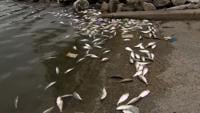TODDVILLE, MD - The Chesapeake Bay is facing a challenging summer, with the spring rain that dumped on Delmarva potentially contributing to the expansion of dead zones within the bay. Dead zones are areas of water that lack sufficient oxygen to support marine and plant life, often resulting in mass die-offs.
Rainy Spring Weather Believed to be Cause of Dead Zones in the Chesapeake Bay
- Lauren Miller
Lauren Miller
Video Journalist
Lauren knew she wanted to work as a reporter when one of her professors invited a local TV news reporter to talk about her successes and learning experiences on how she got to where she is today. Lauren's beat is the Midshore and specializes in stories on the Chesapeake Bay, juvenile crime, and tourism on the Eastern Shore.
- Updated


(WBOC).
Lauren Miller
Video Journalist
Lauren knew she wanted to work as a reporter when one of her professors invited a local TV news reporter to talk about her successes and learning experiences on how she got to where she is today. Lauren's beat is the Midshore and specializes in stories on the Chesapeake Bay, juvenile crime, and tourism on the Eastern Shore.
Get email notifications on {{subject}} daily!
{{description}}
Email notifications are only sent once a day, and only if there are new matching items.
Followed notifications
Please log in to use this feature
Log InRecommended for you
Not home to watch today's news? Sign up for WBOC's daily headlines to keep up with the latest across Delmarva, sent straight to your inbox.
Success! An email has been sent to with a link to confirm list signup.
Error! There was an error processing your request.
Trending Now
-
Ocean City Air Show to Start Early Saturday
-
UPDATE: Millsboro Altercation Ends in Gunfire, One Dead
-
A Bitter Pill For Delmarva To Swallow
-
UPDATE: Delaware Amber Alert for 3-Year-Old Cancelled, Homicide Investigation Launched in Maryland
-
UPDATE: Day 1 of Ocean City Air Show Ends Early Due to Low Clouds and Visibility
